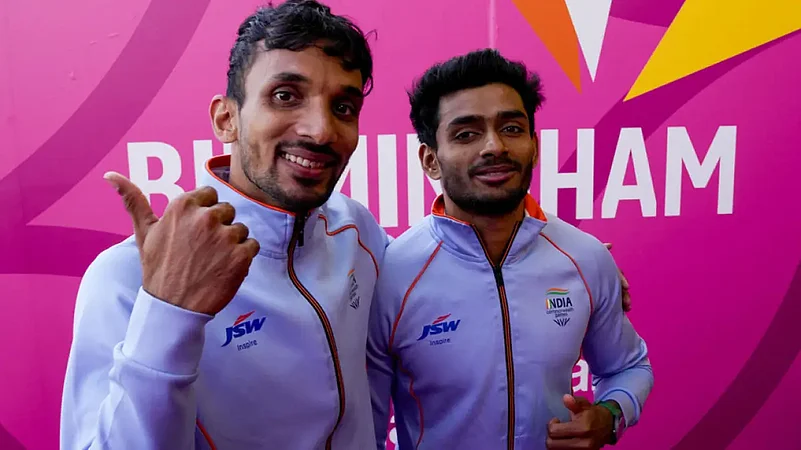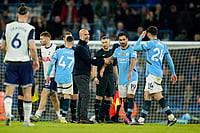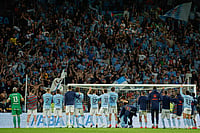The subject of running can often bring out the pomposity among some people. They will hold forth on posture and shoes and Garmin watches. At some point Murakami might be mentioned. Running seems like an awfully hard, academic thing when this specimen talks about it. (More Sports News)
Then there is Avinash Sable, for whom running happened in a most natural way.
Growing up in Mandwa village in the parched region of Beed, central Maharashtra, and with school and farm and most things a few kilometres away, feet were the young Sable’s only mode of transport. Running was easier and more fun than walking for him, even on Beed’s cracked, thorny plains.
“Mujhe har kaam daud ke karna aasan lagta tha,” (I liked to perform every task, every chore, running) the wiry 27-year-old Indian Army runner said after winning the 3000m steeplechase silver medal at the Commonwealth Games, over rivals that included 2016 Olympic gold medalist Conseslus Kipruto of Kenya. “Khet me jana, mujhe daud ke jana pasand tha. School me jana mujhe daud ke jana pasand tha.” (Whether it was to go to the farm or school, I would enjoy running.)
Sable spoke with a smile, and in the ‘gavthi’ patois of rural Maharashtra.
“Chalne se asan mujhe daudna lagta hai.” (I find running easier than walking.)
Indian sport is thankful for that.
The timing of Sable’s success, and of India’s other medal winners at the CWG, could not have been better.
On the cusp of India’s 75th Independence Day, in a competition that harks back to colonial times, India made a statement.
As the Games concluded on August 8, India finished with 61 medals. Twenty-two of those were gold. And some of the silvers and bronzes were as meritorious as gold. Overall, India finished fourth among 72 nations.
There are some who question the level of competition at the CWG. Sable’s performance answers some of that cynicism. Moreover, leading sports nations like Australia, the UK and South Africa compete in the CWG. Usain Bolt, the face of Olympic sport for years till his retirement, ran in the 2014 Commonwealth Games. That says a bit, even though the CWG experience was a bit of a picnic for Bolt.
Putting the place of the CWG into perspective, Craig Phillips, chief executive of Commonwealth Games Australia, said in Sydney Morning Herald, “Our swim team was on par with the Olympic team that we had last year. So we know that our athletes value coming here. Someone always emerges, and the Commonwealth Games often gives an athlete their first international experience.”
There is another reason why this CWG was crucial. The Asian Games in Hangzhou, China, were to be held this year. But they were postponed to 2023 due to Covid. And so the World Athletics Championships and the CWG were the only major events where contenders for the 2024 Olympics could test themselves this year.
All things considered, such as the absence of shooting and of Neeraj Chopra, India’s performance has been encouraging.
“We said we’d double our record (of athletics medals), no one believed it,” Adille Sumariwalla, the former Olympian and Athletics Federation of India (AFI) president, told NDTV. “When we say something, we don’t say it without basis. There is research, there is study, there is planning. Now we have eight (athletics medals), that too without Neeraj.”
India’s women athletes once again made the country proud. Weightlifter Mirabai Chanu, boxers Nikhat Zareen and Nitu Ghanghas, and badminton star PV Sindhu were among the contestants who brought gold for the country, scoring a point over patriarchy and narrow-mindedness. Lawn Bowls became an overnight curiosity. As Indian women won the team gold, many wanted to know what this endearing, relatively accessible sport was.
"I never thought I would get excited by a game of Lawn Bowls,” Mahindra Group chairman Anand Mahindra tweeted. “Frankly I don’t even know how the game is played! But if India is winning, well then, I’m on my feet cheering!"
Through the ten-day event, Indian athletes displayed their increasing self-belief. In an interview after his historic gold in the triple jump, Eldhose Paul said, “Our sports culture has gotten stronger after Neeraj Chopra winning a medal in the Olympics. Hamara belief bhi badh gaya hai. (Our belief has increased). We believe we can do anything.”
Paul and his Ernakulam compatriot Abdulla Aboobacker registered a first for India when they took the first two positions in the triple jump. Aboobacker said, “An Olympic medal is not difficult [for us]. We’ve done 17-plus metres many times. If we get to 17.40, we can get a medal.”
Birmingham also saw that Indian athletes could be quick learners. At the World Championships shortly before the CWG, Sable was lulled by the slow pace set by rivals in the final. He finished 11th in what became the slowest steeplechase final in the event’s history. The disappointment tortured him. Through sleepless nights and missed meals, he analysed what went wrong. Only after winning at the CWG, running his way, did he find peace.
Behind the success of the athletes were uplifting stories of family support and sacrifice. Ghanghas’ father was on unpaid leave for three years as he trained her in Bhiwani, Haryana. Eldhose’s grandmother, 89, virtually brought him up single-handedly.
“Without her, I’m nothing. The full credit is hers,” Paul said.
More credit could be her way. The dream hadn’t been accomplished yet, Paul said. "This is just the beginning."
















